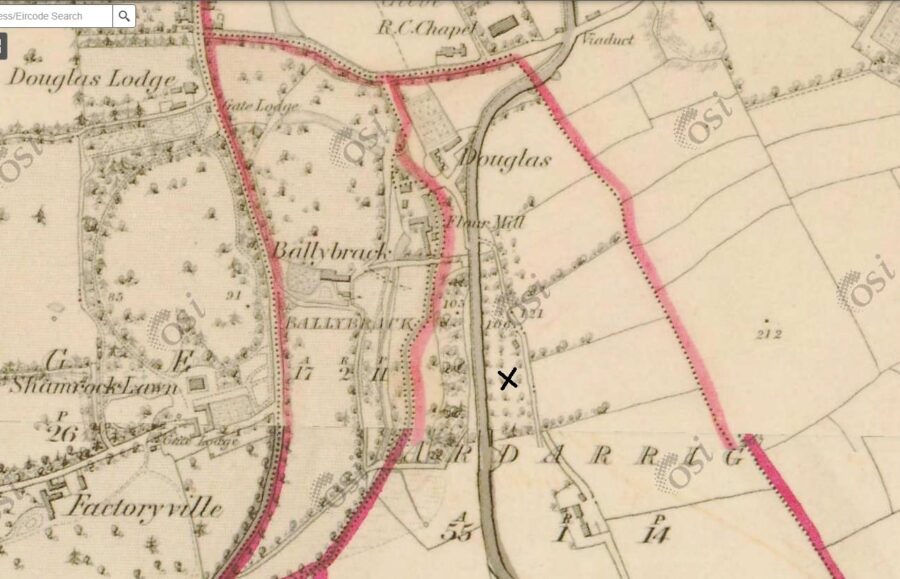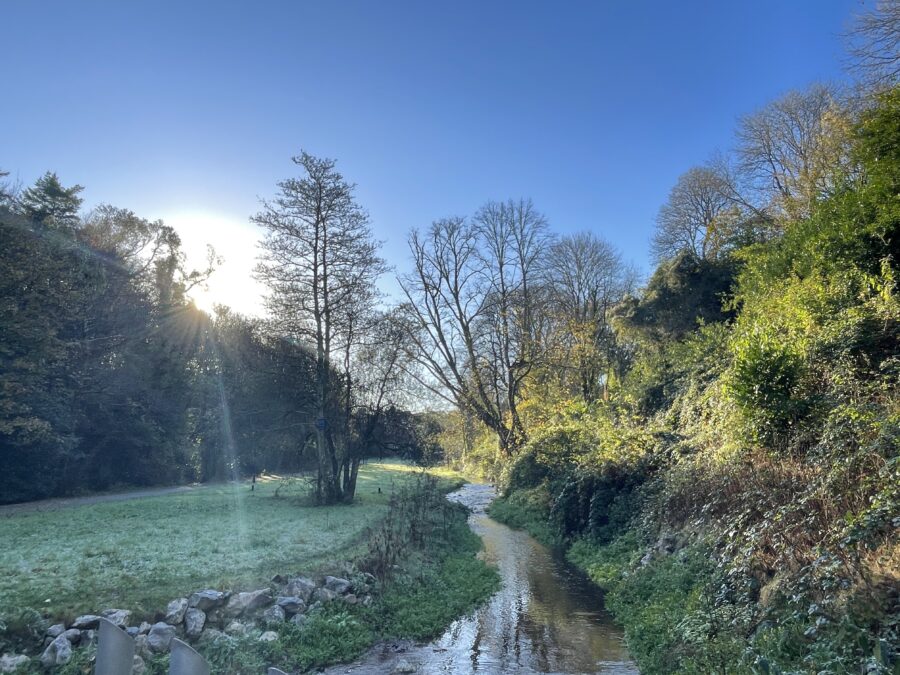
Ballybrack Woods located in Douglas, hosts stories ranging from a sailcloth factory, to a big house and its demense lands to its present day urban forestry status.
On 1 June 1726, Douglas Sailcoth Factory was begun to be built on Church Road on the site of what is now the entrance to Ballybrack Woods opposite Douglas Community Park or adjacent to Douglas ICA building. Huguenot members Samuel Perry and Francis Carleton were the first proprietors. They were also members of the Corporation of Cork.
The eighteenth century was the last golden age for wooden sailing ships, before the 1800s made steam and iron prerequisites for modern navies and trading fleets. It was a golden age too for maritime exploration, with the voyages of James Cook amongst others opening up the Pacific and the South Seas.
Robert Stephenson, technical expert on linen industry, who visited every linen factory in Munster, Leinster and Connaught on behalf of the linen board visited Cork on 9 August 1755: “Near this city and in it are carried on the only sail cloth manufacturers worth notice at present in the Kingdom; Douglas Factory, the property of Messrs. Perry, Carelton and Co. contains about 100 looms, with Boylers, Cesterns, Kieves and every apparatus for preparing the Yarn to that Number”.
The mills and the surrounding glen were also connected by the fast moving stream flowing through it. The stream travelled through the mills, powering its waterwheel and creating a water source. It also powered an adjacent flour mill.
The forested glen is colloquially known locally as the ‘Mangala’, a word originating from ‘Mangel’. A mangel, or mangold, is a beet grown as animal fodder and it is said that these were planted to feed the horses that worked in Douglas factory.
Part of the forested glen is also named after Ballybrack House, a modest ‘Big House’ on the hill behind the trees, who may also have laid out the existing wooded area. On nineteenth century ordnance survey maps, paths are drawn into the woods. The house and estate was sold by public action on 6 September 1880 where a description was given of Ballybrack in the Cork Examiner:
The Dwelling House and Demesne Lands of Ballybrack, and part of Ardarrig. The Lands of Ballybrack, with the DwellingHouse, Offices, and Garden thereon, containing about 17 acres are held in Fee Simple.
Part of Ardarrig, forming part of the wood at one side of the holding, containing about three acres, is held under lease dated 8th September, 1874, for three lives; at the yearly rent of £1011s.
The Dwelling House stands on an elevation in the centre of the lands, which are beautifully laid out. It has lately been put into thorough repair, and is fit for the immediate, reception of a gentleman’s family. There is an abundant supply of the best water (which is forced by a water wheel on the lands) to the top of the house.
There, is a good Coach-house, with stabling for two horse ; also, a cow shed. Ballybrack is situated close to the village of Douglas, within two miles of Cork, and surrounded on all sides by gentlemen’s residences. The late tenant paid for the Dwelling House, Offices, and Demesne Lands the yearly rent of £110.


In the late nineteenth century this house was owned by a branch of the Lane family, who were prominent in Cork’s political and social life. Hugh Lane, famous for his art collection, was born in Ballybrack House on 9 November 1875.
In 1866, the sail cloth factory site was moved uphill and a new multi-storey flax-spinning mill at Donnybrook was designed and built by the Cork architect and antiquarian, Richard Bolt Brash, for Hugh and James Wheeler Pollock. There are no traces of the original factory surviving on Church Road.
In 2014 Cork County Council began the construction of the central path upstream from Douglas Community Park up towards Castletreasure. This work saw the existing footpaths upgraded to 3m wide, tarmacked cycle/walking ways with lighting.
Douglas Tidy Towns began to repair some of informal trails in the Ballybrack Woods. Funding for this work was provided by SECAD, Cork County Council and donations from local people and businesses. The work was carried out by contractors, Probation Service, Douglas Scouts and Douglas Tidy Towns Volunteers.
Cork City Council have in recent years worked with Douglas Tidy Towns to add information panels and to create a biodiversity plan.
Read more on the work of Douglas Tidy Towns here: Douglas Tidy Towns


Read about Old Court Woods here, 15. Old Court Woods, Garryduff | Cllr. Kieran McCarthy